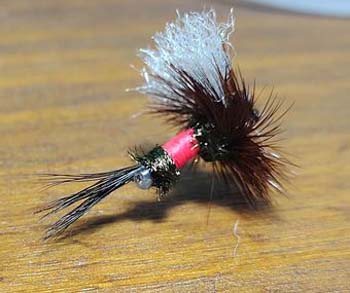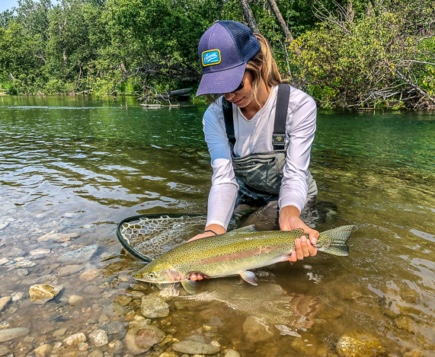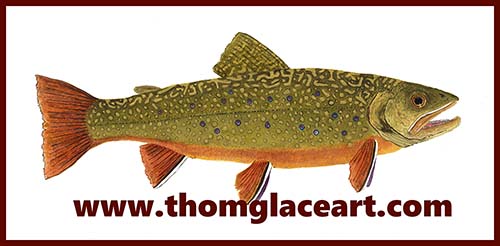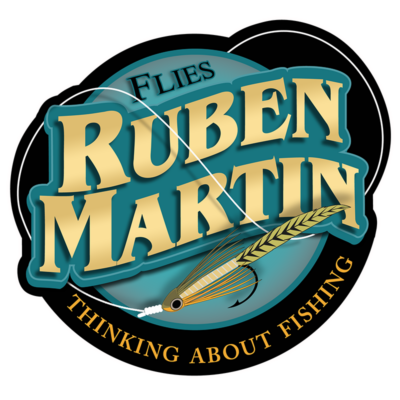
Tube solution. Photos: Kyle Shea [Deneki Outdoors].
Tube fly ‘storage and carry access’ fly boxes
By Henry Clement
Tube flies are best carried without being crushed. Fly wallets compress flies, making them distorted, crushed permanently, or ruined if they are not 100% dry and left in a closed storage conveyance.
The second way is CF Design tube fly boxes. They overengineer, cost too much, and do not solve the central issue of carrying a lot of tube flies unmolested.
The third way is getting different-sized ‘Smoothie’ straws, half an inch and smaller in diameter, and sealing off one end using a flame placed close enough to the plastic to melt the end closed. Friction keeps each fly from sliding out the open end. Both the smoothie straw and the CF Design tube fly carry will crush some flies, and there is no convenient way to carry a lot of straw-stored tube flies.
Plan D Tube Fly Boxes
Thanks to Deneki’s awareness, they helped develop or just discovered Plan D Tube Fly Boxes. The design is near perfect, and the inventor or inventors have applied for a well-deserved patent. They solved carrying, accessing, and putting away wet tube flies.
 In April 2018, Deneki wrote in their newsletter, Plan D Tube Fly Boxes
In April 2018, Deneki wrote in their newsletter, Plan D Tube Fly Boxes
Here is what Deneki’s staff collaborative wrote about managing tube fly ingress, egress, and portability with the fly boxes called Plan D. We fish many tube flies at our lodges in Alaska and British Columbia. Tubes offer several advantages over flies tied on traditional hooks, but their biggest disadvantage is that they cannot be stored in a conventional fly box.
Most of our guides prefer plain ol’ Plano-style ‘fly’ boxes when housing a season’s worth of tube flies. They’re inexpensive, customizable, and hold a ton of flies, but they’re far from ideal. They are bulky and tend to smash materials flat as flies bounce around unsecured, and when opened on a windy day, they send dozens of unweighted flies across the river.

Ruben Martin’s Tube Humpy.
Sound familiar?
For years, we’ve been hoping for a solution to securely house a decent selection of tube flies on our person. That’s why we were super excited when we first got wind that the folks from Plan D would release a line of boxes designed exclusively for tube flies. It’s the most innovative system for housing tubes we’ve seen, so we thought we’d tell you about it today.
Mandrels
How Plan D works Plan D’s tube fly boxes utilize individual stainless steel ‘mandrels’ to securely anchor flies inside the box. To house a fly, the mandrel is inserted through the back end of the fly until the mandrel ‘clip’ catches the end of the tube (or junction tubing if used). The length of the mandrel extending out the front of the fly is then measured against the fly box and custom cut to size using a pair of wire cutters.

Amelia Wilson with Rainbow Trout / Patrick Frits photo credit – Deneki Outdoors
DIY and spare mandrels
The mandrel is then easily pressed into the slotted silicone at the box’s top (or bottom), locking the fly into place. As recommended, we cut the mandrels to extend as far beyond the silicone slot as possible (see photo below).
This allows pressure to be applied on each side of the silicone when securing flies, and it makes for a more versatile length if reused for flies of different sizes. Each tube fly box comes with enough mandrels to fill the box.
However, to accommodate different fly sizes, lost mandrels, etc., spare mandrel kits are also available in three different diameters to accommodate flies tied on different-size tubes. The center of each box also features a narrow strip of slotted foam (similar to a traditional fly box) designed to house the corresponding stinger hooks for your flies within the same box.
Click here to read the complete story . . .
 Contact Deneki Outdoors:
Contact Deneki Outdoors:
United States Information and Reservations
1-800-344-3628
International Information and Reservations
+1 (907) 563-9788
Rapids Camp: (907) 246-8345
Alaska West: (907) 563-9788
Andros South: (242) 369-1408
Rio Salvaje: (907) 563-9788
We are available Monday through Friday from 9 a.m. to 6 p.m. Alaska time (UTC -8 or -9, depending on the time of year). If we aren’t available, leave a voicemail 24/7 (we’ll get back to you quickly).






